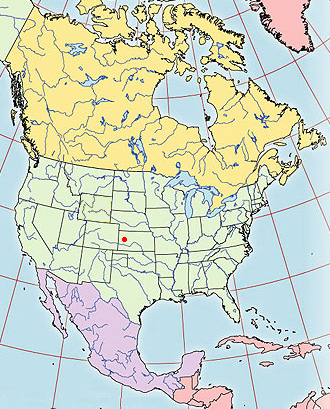
|
This virtual field trip takes us to some unusual outcrops in western Kansas. Specifically, we're going to sites near or in Lake Scott State Park in northern Scott
County, Kansas. If you've ever driven across western Kansas, you know any
outcrop is unusual here. It's an incredibly flat landscape, as the image below shows - it's from just south of the park.
|

|
|
|
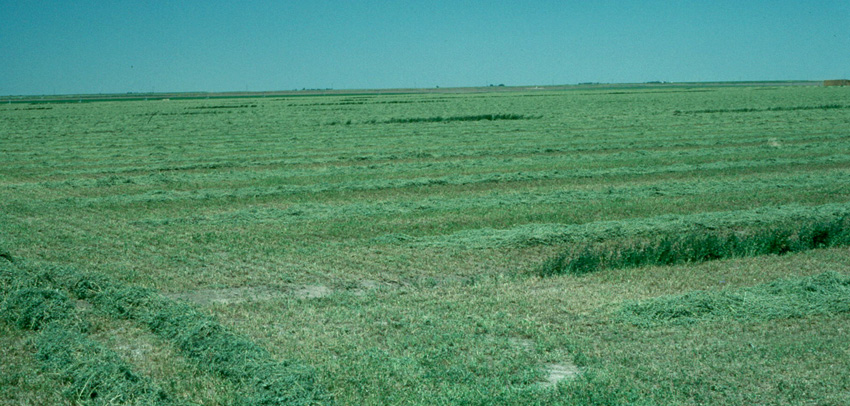
|
|
|
|
However, Ladder Creek has cut a small valley as it flows north toward the Smoky Hill River, and there are outcrops on the valley's sides, as the three images below show. The first was taken looking west from the second; the third is from farther south and outside the park.
|
|
|
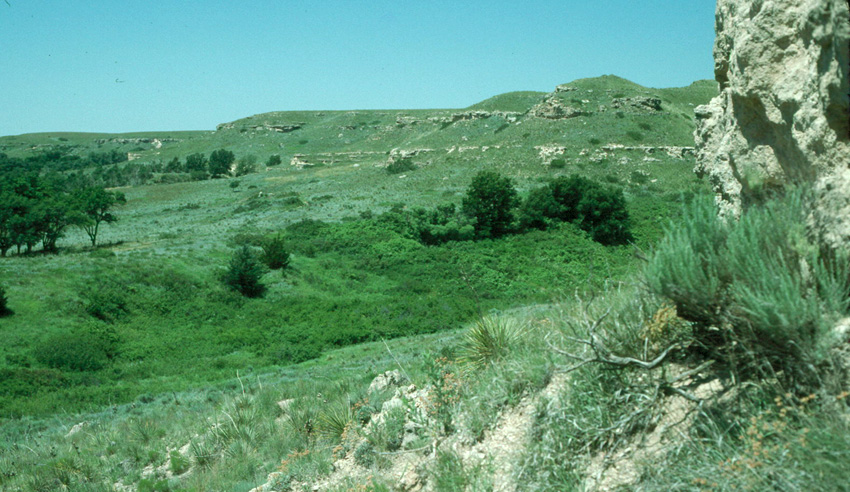
|
|
|
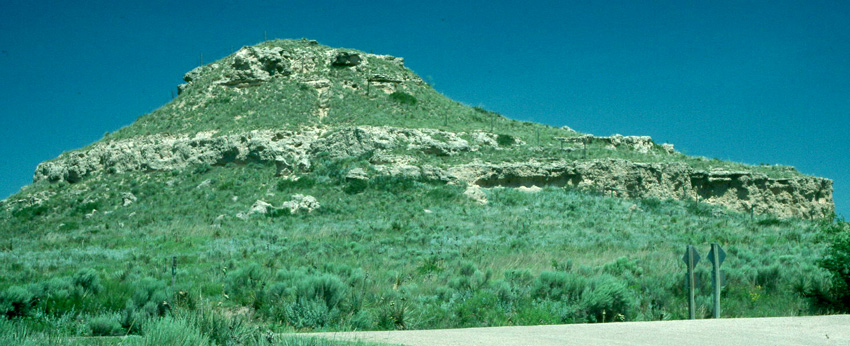
|
|
|
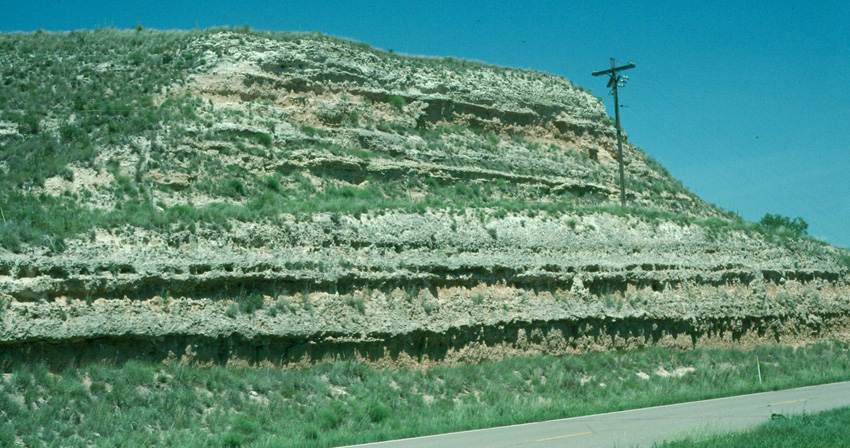
|
|
|
|
These outcrops of buff-colored layered rock look for all the world like limestones. However, geologic maps tell us that we're in the outcrop belt of the Pliocene-age Ogallala Formation, a layer of silt, sand, and gravel famous as an aquifer in the Great Plains. What's going on? Let's take a closer look at the outcrop in the middle of three images above. What do you see?
|
|
|
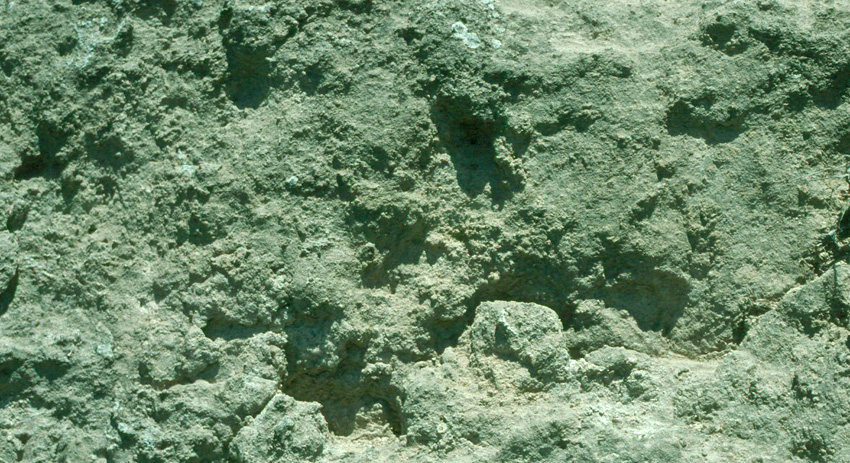
|
|
|
|
In response to the question "What do you see?", most geologists would frown and say, "Not much". The image shows no fine-scale layering, no other structures, and no fossils. At most, there are some odd lumps and bumps. The rock does react with dilute HCl, so it does contain CaCO3. However, it's about as inscrutable as a carbonate rock can be. As we examine this material further, we will have to consider at least four
multiple working hypotheses: i) These are limestone beds, but lacking the macrofossils typical of limestones; ii) These are beds of calcite-cemented sandstone, and we're not recognizing the sand sufficiently to see them as such; iii) These are beds of travertine or tufa; iv) These beds are something entirely different. With than in mind, let's look at thin sections of this material. The first below comes from the massive material in the middle outcrop image. The second comes from one of the lower beds of the third outcrop image. The images below were obtained with a petrographic microscope, a transmitted-light microscope equipped with polarizing filters. These images were obtained with crossed polarizing filters below and above the sample, so the brown is fine-grain carbonate minerals and clay, and the white to gray spots are detrital silicate sand and silt grains.
|
|
|
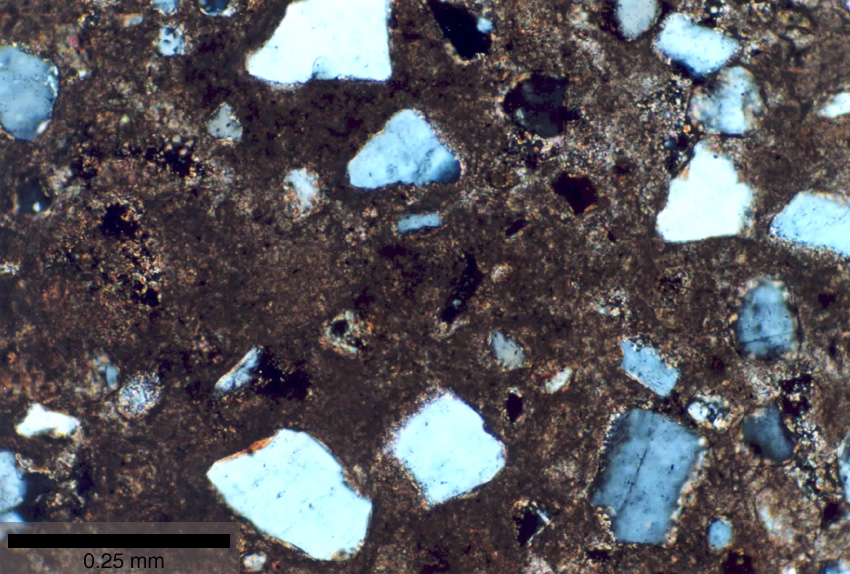
|
|
|
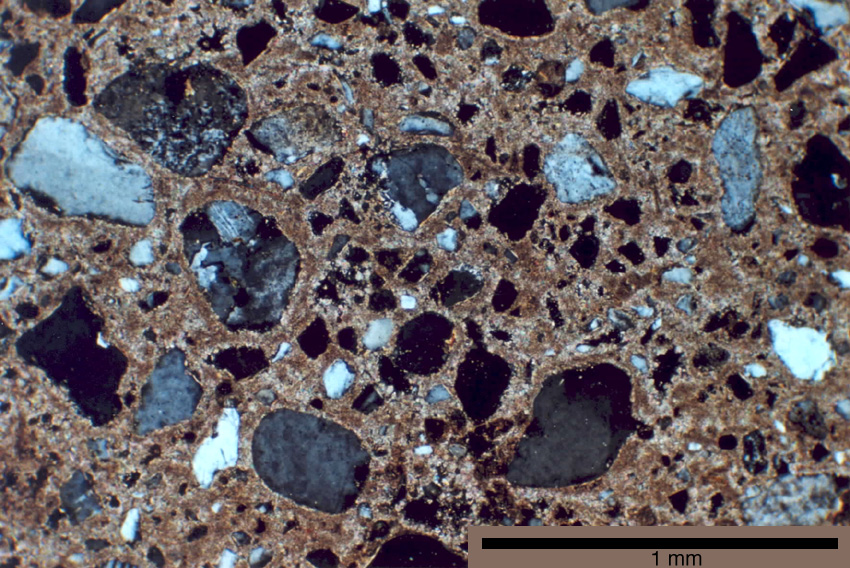
|
|
|
|
In the two images above, we're looking at silicate sand grains held together by a fine-grained carbonate cementing material. However, this looks nothing like a calcite-cemented sandstone. In a calcite-cemented sandstone, one usually sees sand grains in contact with each other, and large crystals of calcite engulfing several sand grains. (If you're not familiar with such things, you can look at an example.) The fine-grained nature of the CaCO3 in the images above suggests more rapid precipitation than the slow growth typical of the calcite that cements most sandstones. Let's go on to look at some more thin-section images, these from a sample from a middle bed in the lowermost outcrop image above.
|
|
|
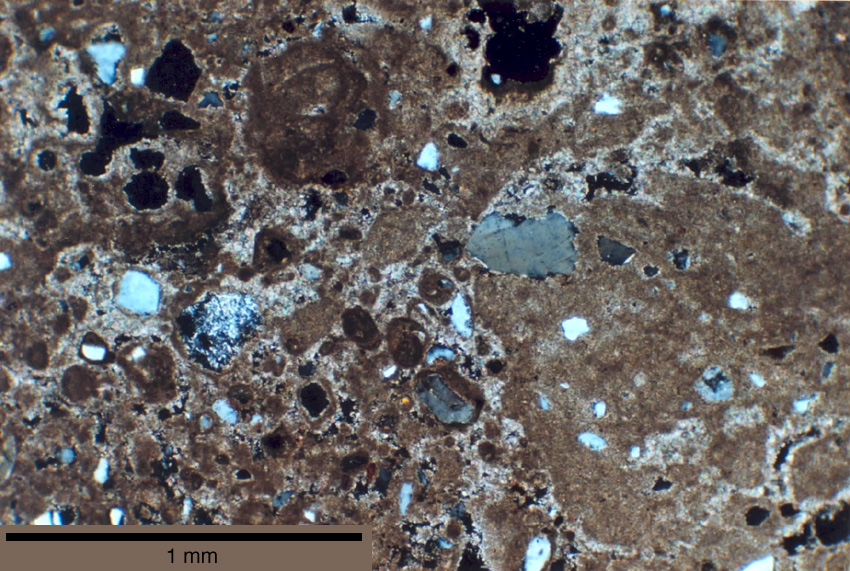
|
|
|
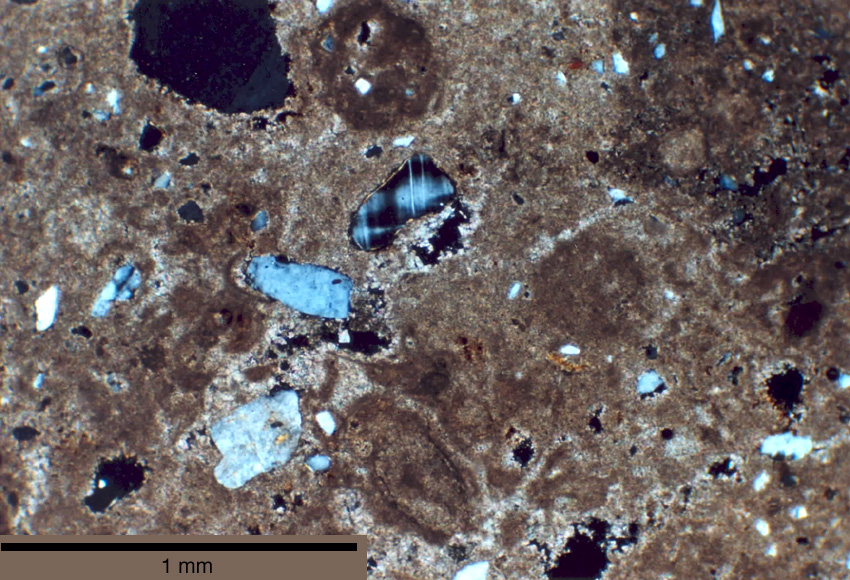
|
|
|
|
Note the variability in the carbonate material, from light brown to dark, and its clumpiness or tendency to form nodules. These concretions or nodules are larger and less distinct than the peloidal fabric typical of travertines or tufas. (If you're not familiar with that fabric, you can look at an example or another example.) Finally, look at these two images of one odd structure. The lower image is a higher-resolution image of part of the upper one.
|
|
|
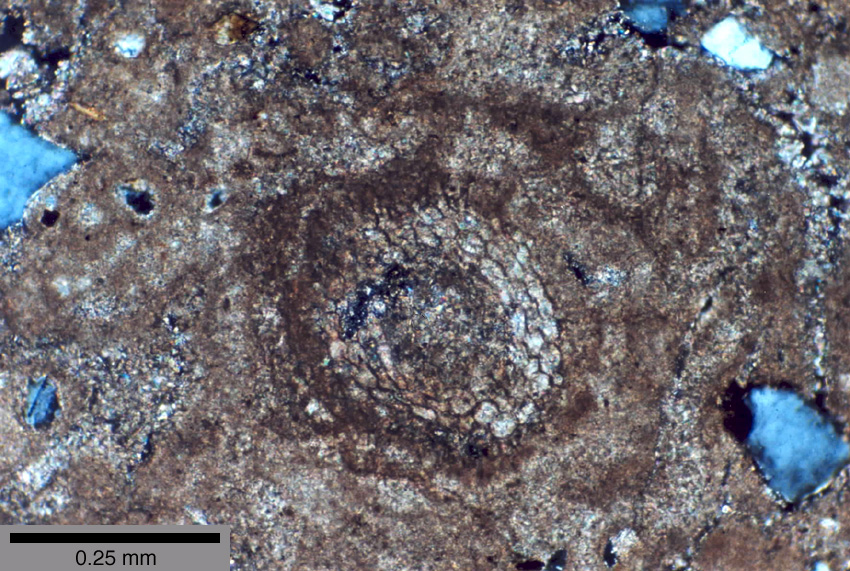
|
|
|
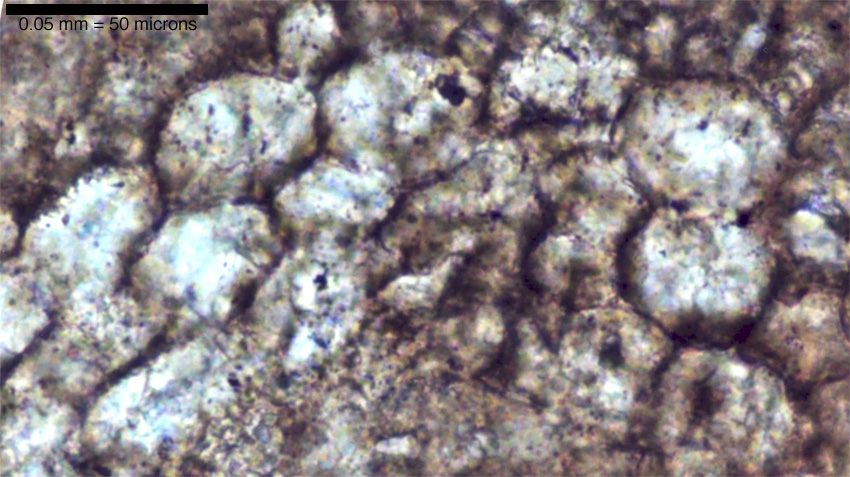
|
|
|
|
This round clump of cellular structures appears to be just that: a cluster of plant cells. Calcite has filled in the cell interiors, but the cell walls remain as brown loops. We're probably looking at a cross-section of a plant root.
So, what evidence have we amassed? Here's a list:
1) We've got sand held together by fine-grained CaCO3 suggestive of relatively rapid chemical precipitation (more rapid than that expected in the deep groundwater of an aquifer). The conclusion: We're not looking at a limestone, calcite-cemented sandstone, travertine, or tufa. Instead, we've found calcrete or caliche, a mass of CaCO3 precipitated within soil and sediment from very shallow groundwater. This conclusion fits our evidence. Evaporation from groundwater can quickly elevate carbonate saturation state, leading to abundant nucleation and thus the fine-grained carbonate fabric we've observed (#1 above). Evaporation through the pores of the vadose zone can lead to considerable fine-scale variation in saturation state and thus the patchy fabrics we've observed (#2 above). Penetration of roots into the soil can give the organic remains that we've found (#3 above). Finally, because the CaCO3 in calcrete forms de novo from groundwater, we have an explanation of the lack of calcareous fossils in this material (#4 above). Calcrete or caliche forms the "hardpan" of soils in semiarid environments. Caliche is more commonly a few inches to at most a few feet thick, and it's usually not strong enough to maintain cliffs several feet high. Here, we've come across a spectacular example. However, this example nicely illustrates some of the hallmarks with which a well-driller, engineer, geologist, or archeologist must be familiar in order to avoid finding a similar deposit and thinking that she or he has found bedrock.
______________________ To read more about the geology here, you can go to Kansas Geological Survey Bulletin 66 on the Geology and Ground-water Resources of Scott County, Kansas. You can also visit a building-stone webpage about a short-lived but interesting building, a pueblo, that was constructed with the caliche discussed above. |
|
|
Back to The main page for Railsback's virtual field trips
Back to Railsback's main page
Back to the UGA Geology Home Page